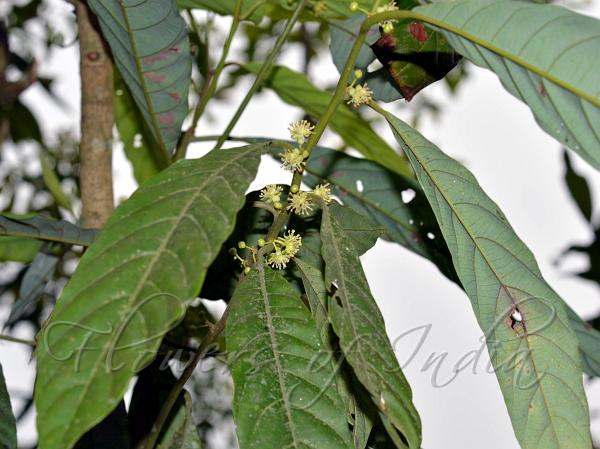|
| Lanceleaf Litsea |
|

|

| File size | 521676 |
| Original date | 4/21/17 7:19 AM |
| Resolution | 0 x 0 |
| Flash | Flash fired, return detected, auto |
| Focal length | 60.0mm |
| Exposure time | 1/125s |
| Aperture | 8.0 |
| Focus Distance | |
| Metering Mode | Multi-segment |
| Camera make | NIKON CORPORATION |
| Camera model | NIKON D3200 |
| Sensor type | OneChipColorArea |
|
|
|
|
Photo: |
Botanical name: Litsea lancifolia Family: Lauraceae (Laurel family)
Synonyms: Litsea hansenii
Synonyms: Litsea hansenii
Lanceleaf Litsea is an evergreen shrub, about 3 m
tall. Branchlets are rusty woolly or gray-yellow velvet-hairy. Leaves
are opposite or alternate on same tree; leaf-stalk 3-10 mm, hairy like
branchlets; leaf blade elliptic, oblong, lanceshaped,
oblong-lanceshaped, or elliptic-lanceshaped, 5-10 × 2.4-4.5 cm,
yellow-brown or rusty woolly or gray-yellow velvet-hairy below, lateral
veins 5-8 pairs, base wedge-shaped or rotund, tip pointed or tapering.
Flowers are borne in umbels in leaf-axils, solitary or clustered, male
umbel 3-flowered; flower-cluster-stalk nearly absent or 5-7 mm. Male
flowers: flower-stalk about 1 mm; tepals 6, lanceshaped or oblong;
fertile stamens 9, sometimes 6. Fruit is spherical or ellipsoid, seated
on shallowly disc-like flower tube; fruiting flower-stalk is about 3
mm. Lanceleaf Litsea is found in thickets, streamsides, forests at
altitudes of 100-2000 m in the Himalayas, from Nepal to Bhutan, NE
India, Philippines, Thailand, Vietnam. Flowering: May-June.
Medicinal uses: Warm root extract is taken
frequently by Chakmas for the cure of diarrhoea in Rangamati
Warm root extract is taken
frequently by Chakmas for the cure of diarrhoea in Rangamati
Medicinal uses:
 Warm root extract is taken
frequently by Chakmas for the cure of diarrhoea in Rangamati
Warm root extract is taken
frequently by Chakmas for the cure of diarrhoea in Rangamati | Identification credit: Saroj Kasaju | Photographed in Sourinee, Mirik, Darjeeling distt. |
• Is this flower misidentified? If yes,